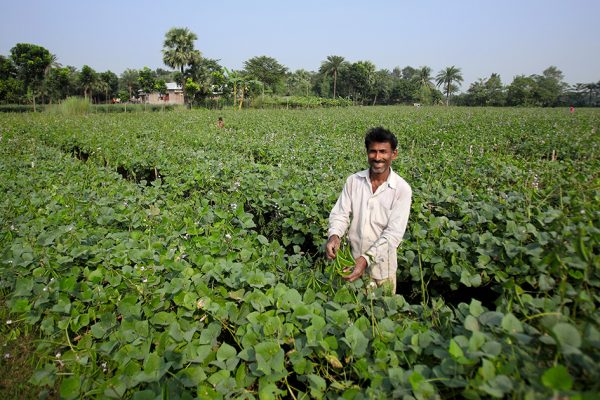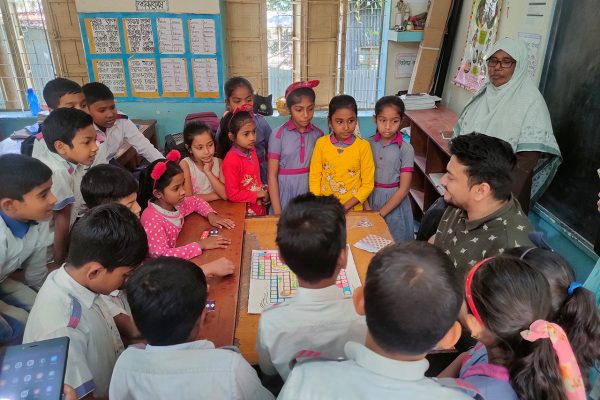Microfinance Impact and Innovation Conference: Targeting the Ultra Poor
Reading Time: 3 minutes
A couple of weeks ago, BRAC USA President & CEO Susan Davis moderated a panel of researchers and practitioners providing resources to the “ultra poor” – women who are too poor to be able to take advantage of microfinance loans – at the Microfinance Impact and Innovation Conference.
A couple of weeks ago, BRAC USA President & CEO Susan Davis moderated a panel of researchers and practitioners providing resources to the “ultra poor” – women who are too poor to be able to take advantage of microfinance loans – at the Microfinance Impact and Innovation Conference.
BRAC launched its groudbreaking program for the ultra poor in 2002, and has since provided technical assistance to other microfinance institutions around the world. BRAC University’s BRAC Development Institute, in partnership with BRAC USA and The MasterCard Foundation, has been researching programs for the ultra poor, called “Graduation Programs,” in eight countries.
Below is a recap of the presentation at the Microfinance Impact and Innovation Conference by Tim Ogden of Philanthropy Action.
It may seem callous to segment people living on under $2 a day—there’s no doubt these people are poor—but its an important thing to do. The daily realities of life for someone living on less than a dollar a day are quite different from someone earning $1.75 a day. Income also doesn’t capture the whole picture. Assets, in the shape of anything from furniture to jewelry to land to livestock, or the lack thereof play a big role in the daily quality of life of people living under the $2/day threshold. That’s why within the microfinance community there is a distinction between the poor and the ultrapoor. While there are many different definitions that vary by country and culture, you can think of the ultrapoor as women-headed households (often widows) with little or no land or livestock who earn under a $1 a day. Microcredit has never been a good product for the ultrapoor, who unlike those slightly higher up the ladder are close to living hand-to-mouth.
BRAC, an NGO commendable for its commitment to monitoring, evaluation and research, created a program to target the ultrapoor with the hope of helping them “graduate” into microfinance clients. The BRAC ultrapoor program involved, among other efforts, transferring assets (such as livestock), cash transfers, education (such as health/hygiene, animal husbandry, financial literacy) and assistance with building savings. The results of BRAC’s ultrapoor program have been promising, prompting the replication of the basic model in 10 different contexts, with assistance from CGAP and the Ford Foundation.
Results of evaluations from two of those replications in India (programs run by Bandhan and SKS Foundation) were presented at the conference. Both of the programs were explicitly modeled on the BRAC program.
Both programs showed encouraging gains for the beneficiaries. In the Bandhan program specifically there was a marked increase in food security (families skipped fewer meals). In the SKS program there were not measurable increases in income but a marked shift in the source of income from day labor to livestock. This is potentially a significant gain for beneficiaries because livestock income is obviously less arduous but also more regular and predictable than day labor.
Other interesting findings from the study are around the periphery. For instance, in the Bandhan program 35 percent of eligible participants either declined to participate or quit very early in the program—a shockingly high rate given that there were no loans, just cash and asset transfers in the program. In the SKS program, 60 percent of the participants (all women earning less than 60 cents per day) had a savings account and 75 percent had a loan (mostly from government sponsored Self Help Groups). These findings reinforce the stories of Portfolios of the Poor illustrating that even the ultrapoor consume a much wider array of financial services than we often assume. Finally the significant difference in impact (significant food consumption gains vs no measurable gains) between the two programs is very interesting given that they have the same basic design.
The ultimate results from these studies will come over the next year as a second round of surveys are done to measure longer term impact—are the changes seen sustained after the program ends? In the BRAC programs the gains persisted. Let’s hope the same is true in these programs.
Other interesting findings from the study are around the periphery. For instance, in the Bandhan program 35 percent of eligible participants either declined to participate or quit very early in the program—a shockingly high rate given that there were no loans, just cash and asset transfers in the program. In the SKS program, 60 percent of the participants (all women earning less than 60 cents per day) had a savings account and 75 percent had a loan (mostly from government sponsored Self Help Groups). These findings reinforce the stories of Portfolios of the Poor illustrating that even the ultrapoor consume a much wider array of financial services than we often assume. Finally the significant difference in impact (significant food consumption gains vs no measurable gains) between the two programs is very interesting given that they have the same basic design.
The ultimate results from these studies will come over the next year as a second round of surveys are done to measure longer term impact—are the changes seen sustained after the program ends? In the BRAC programs the gains persisted. Let’s hope the same is true in these programs.





